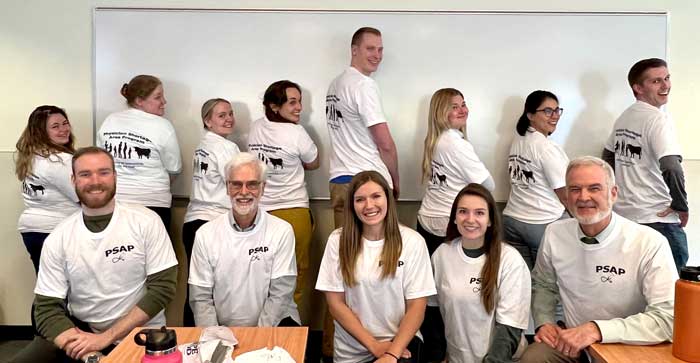Thomas Jefferson University's Physician Shortage Area Program
- Need: More rural doctors were needed in multiple states. In Pennsylvania, nearly half of the state's physicians practice in just three large metropolitan counties.
- Intervention: Sidney Kimmel Medical College at Thomas Jefferson University established the Physician Shortage Area Program (PSAP) in 1974 to recruit and support students who are from rural backgrounds and who wish to practice in rural communities.
- Results: Approximately 80% of PSAP alumni have remained in rural family medicine for at least 20 to 25 years after graduation.
Evidence-level
Evidence-Based (About evidence-level criteria)Description
The Physician Shortage Area Program at Thomas Jefferson University's Sidney Kimmel Medical College was established in 1974 with the goal of increasing the number of family physicians working and living in rural Pennsylvania. Since its founding, the program has expanded to also target students from rural Delaware and to include students who plan to work in specialties other than family medicine.

The PSAP selectively admits medical school applicants who grew up in rural areas or small towns and who wish to practice in a similar area, reserving up to 24 spots in each class for qualified PSAP applicants. Thomas Jefferson University works cooperatively with eight undergraduate colleges and universities in Pennsylvania and Delaware to recruit students for the program, but students from non-partner colleges are also welcome to apply. PSAP applicants complete a brief additional application in addition to their regular medical school application, which includes three letters of support from people in their hometown.
Students admitted to the program receive personalized support from faculty and peer groups, participate in a mentorship program, and must complete a six-week rotation in a small or rural community.
Read more about the PSAP in the Rural Monitor article Thomas Jefferson University Program Reflects on Nearly 50 Years of Producing Rural Doctors.
Services offered
Throughout medical school, PSAP students receive ongoing mentorship and support from PSAP faculty in the form of email advisement, monthly peer group meetings, and individual meetings. PSAP students are also paired with a "Big Sib" mentor from the previous PSAP class to provide guidance.
Students in the program are additionally required to complete a six-week rotation in one of two small communities outside of the Philadelphia metropolitan area and are encouraged to participate in a rural preceptorship or elective rotation in their final year.
PSAP students are eligible for additional financial aid, through need-based loans or through two scholarships.
Results
Between five and 15 PSAP students typically enroll in each class. PSAP students have performed similarly to their peers throughout medical school and during residency training.
In the more than 50 years since the program was established, PSAP leaders have closely tracked graduate outcomes. Fifteen papers – including three in the New England Journal of Medicine, three in the Journal of the American Medical Association, and seven in Academic Medicine – and one book have been published on the program's results. Findings over the years include:
- Approximately 70% of PSAP graduates remained in rural family practice in the first location they began working in for at least 20 to 25 years, with an additional 10% staying in rural medicine but moving to another rural area.
- PSAP graduates accounted for 21% of family physicians practicing in rural Pennsylvania who graduated from one of the state's seven medical schools, even though they only made up 1% of those schools' graduates.
- The PSAP produced 12% of all rural family physicians in Pennsylvania who graduated from U.S. and international medical schools from 1978 to 1991.
- 84% of PSAP graduates were practicing in either a rural or small metropolitan area or working in primary care, while only 2 to 3% of non-PSAP graduates were practicing rural family medicine.
- PSAP graduates from two different cohorts (the graduating classes of 1978-1991 and 1992-2002) were more than eight times as likely to practice rural family medicine than their non-PSAP classmates, nearly three times more likely to practice any specialty in a rural area, and more than four times more likely to practice family medicine.
More information about studies tracking PSAP graduate outcomes can be found in Lessons Learned as Thomas Jefferson University's Rural Physician Shortage Area Program (PSAP) Approaches the Half-Century Mark, published in Academic Medicine in 2022.

Challenges
While program leaders describe the PSAP as a relatively inexpensive program, sustainability is an ongoing challenge. The PSAP is funded through the University and the Department of Family and Community Medicine, as well as by a small endowment established years ago with ongoing contributions to the fund by PSAP alumni and a handful of faculty members each year in honor of the program's graduating seniors.
The number of incoming PSAP students varies from year to year and can be unpredictable; some classes have had as few as two PSAP students enroll, while other years have seen as many as 15. To encourage accepted PSAP applicants to enroll at Thomas Jefferson University, the program has begun assigning current students as "transitional mentors" to reach out to accepted applicants; accepted applicants are matched up with current students based on geography, undergraduate schools, or other factors.
Replication
Program leaders believe that closely tracking and analyzing student outcomes has been crucial to the success of the PSAP. While not all programs or universities may have the resources to carry out extensive outcomes research, the PSAP is able to accomplish this due to the Jefferson Longitudinal Study of Medical Education, which has tracked the university's medical students and graduates since the entering class of 1964 and includes more than 6 million pieces of data on students' background, performance, and other information.

Recruiting and admitting students who grew up rural and who have an established desire to work in a similar community has also been integral to the program's ability to produce physicians who practice and stay in rural areas, program leaders say, with PSAP outcomes research finding that the admissions component of the program accounted for roughly three-quarters of its success.
Maintaining good working relationships with partnering undergraduate universities and their faculty, through campus visits and ongoing communication, is also recommended.
Contact Information
Gillian Love, MD, Director of the Physician Shortage Area ProgramThomas Jefferson University & Sidney Kimmel Medical College
Physician Shortage Area Program
Gillian.Love@jefferson.edu
Topics
Health workforce education and training
· Health workforce pipeline
· Physicians
States served
Delaware, Pennsylvania
Date added
March 6, 2023
Suggested citation: Rural Health Information Hub, 2025 . Thomas Jefferson University's Physician Shortage Area Program [online]. Rural Health Information Hub. Available at: https://www.ruralhealthinfo.org/project-examples/1109 [Accessed 7 January 2026]
Please contact the models and innovations contact directly for the most complete and current information about this program. Summaries of models and innovations are provided by RHIhub for your convenience. The programs described are not endorsed by RHIhub or by the Federal Office of Rural Health Policy. Each rural community should consider whether a particular project or approach is a good match for their community’s needs and capacity. While it is sometimes possible to adapt program components to match your resources, keep in mind that changes to the program design may impact results.
